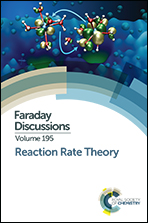Classical molecular dynamics simulation of electronically non-adiabatic processes
Abstract
Both classical and quantum mechanics (as well as hybrids thereof, i.e., semiclassical approaches) find widespread use in simulating dynamical processes in molecular systems. For large chemical systems, however, which involve potential energy surfaces (PES) of general/arbitrary form, it is usually the case that only classical molecular dynamics (MD) approaches are feasible, and their use is thus ubiquitous nowadays, at least for chemical processes involving dynamics on a single PES (i.e., within a single Born–Oppenheimer electronic state). This paper reviews recent developments in an approach which extends standard classical MD methods to the treatment of electronically non-adiabatic processes, i.e., those that involve transitions between different electronic states. The approach treats nuclear and electronic degrees of freedom (DOF) equivalently (i.e., by classical mechanics, thereby retaining the simplicity of standard MD), and provides “quantization” of the electronic states through a symmetrical quasi-classical (SQC) windowing model. The approach is seen to be capable of treating extreme regimes of strong and weak coupling between the electronic states, as well as accurately describing coherence effects in the electronic DOF (including the de-coherence of such effects caused by coupling to the nuclear DOF). A survey of recent applications is presented to illustrate the performance of the approach. Also described is a newly developed variation on the original SQC model (found universally superior to the original) and a general extension of the SQC model to obtain the full electronic density matrix (at no additional cost/complexity).
- This article is part of the themed collection: Reaction Rate Theory

 Please wait while we load your content...
Please wait while we load your content...